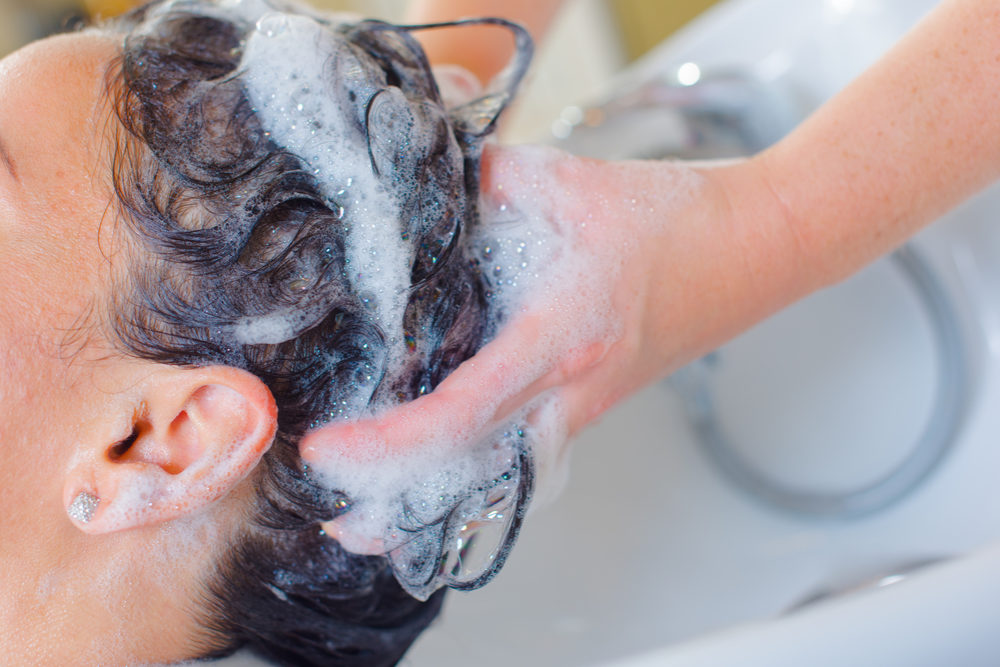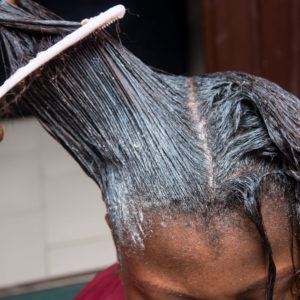Ovarian Cancer Risk Among Hairdressers, Beauticians Higher Than Women in Other Jobs: Study
The study comes amid increasing concerns over hair relaxer ovarian cancer risks, which have resulted in hundreds of product liability lawsuits filed against chemical straightener manufacturers.

A new study warns that hairdressers, barbers, and others who work in beauty salons could face a more than three-fold higher risk of ovarian cancer than those working in other professions, as concerns continue to grow over the side effects of hair relaxers and other chemicals commonly used in the industry.
In findings published this week in the medical journal The BMJ, Canadian researchers indicate that specific occupational exposures among beauticians and other retail workers significantly increased their risk of ovarian cancer. The study linked these risks to exposure to a number of agents, such as cosmetic talc, ammonia, hydrogen peroxide, fluorocarbons and other chemicals in widely used beauty products.
The research comes amid increasing concerns over the safety of chemicals used in hair relaxers, which have been linked to increased risks of ovarian cancer, uterine cancer, endometrial cancer and other ailments, particularly among African-American women, who most commonly apply the products to their scalp at home. As a result, manufacturers of popular products like Dark & Lovely, Just for Me, Optimum and others now face a growing number of hair relaxer lawsuits, alleging that a desire for profits were placed ahead of the safety and health of women of color, by failing to disclose side effects of endocrine disrupting chemicals in hair straighteners.

HAIR RELAXER COMPENSATION
Uterine cancer, endometrial cancer and ovarian cancer may be caused by chemicals in hair relaxer. See if you are eligible for benefits.
Learn More About This Lawsuit See If You Qualify For CompensationIn this new report, researchers in Montreal conducted a case-controlled study using data from 2011 to 2016, involving lifetime occupational histories involving individuals who collectively suffered 491 cases of ovarian cancer, and compared them to 897 controls. They then calculated the ovarian cancer risks based on several occupations and industries.
According to the findings, hairdressers, barbers, beauticians and related workers faced the highest risk of ovarian cancer, more than triple that of other workers. In addition construction workers faced nearly as high a risk. Increased, but not nearly as high, risks were also seen among accountants, salespeople, shop assistants and product demonstrators, the study determined.
The researchers linked the increased ovarian cancer risks to exposures to cosmetic talk, ammonia, hydrogen peroxide, hair dust, synthetic fibers, polyester fibers, organic dyes and pigments, cellulose, formaldehyde, propellant gases, aliphatic alcohols, ethanol, and hydrocarbons. In all, the researchers linked the increased risks to 18 different agents.
“Certain occupations, industries and specific occupational exposures may be associated with ovarian cancer risk,” the researchers concluded. “Further research is needed to provide a more solid grounding for any inferences in this regard.”
Lawsuits over the link between endometrial cancer and hair relaxers began to emerge late last year, after the publication of a study in the Journal of the National Cancer Institute, which highlighted the substantial risk women have been exposing themselves to wen using products like Dark & Lovely, Optimum and other chemical hair relaxers.
In findings published in October 2022, researchers from the National Institute of Environmental Health reviewed data on nearly 34,000 women in the United States between the ages of 35 and 74, who completed questionnaires on their use of multiple hair products, including hair dyes, straighteners, relaxers, or pressing products, and permanents or body waves. A 10 year follow-up on the incident rate of uterine cancer diagnosis was performed, and researchers reported that women who used hair relaxers at least four times per year faced a 156% increased risk of developing uterine cancer.
Given common questions of fact and law in lawsuits against hair relaxer manufacturers filed throughout the federal court system, centralized pretrial proceedings were established last year before U.S. District Judge Mary M. Rowland in the Northern District of Illinois, where coordinated discovery into the link between hair relaxers and cancer is underway.
Following common fact discovery, it is expected that Judge Rowland will establish a bellwether trial program, where a group of representative claims will be prepared for early trial dates to help gauge how juries are likely to respond to certain evidence and testimony that will be repeated throughout the litigation.





0 Comments